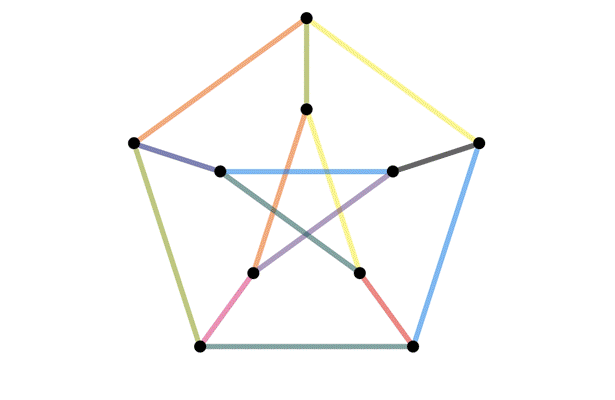Graph Theory Lecture 2:
Isomorphisms
Isomorphisms
When are two graphs
"the same"?

Definition of an isomorphism
An isomorphism $\varphi:G\to H$ of graphs is:
- A bijection $\varphi_V:V(G)\to V(H)$
- A bijection $\varphi_E:E(G)\to E(H)$
That "play nicely together", i.e.:
- We say $G$ and $H$ are isomorphic if there is an isomorphism between them.
- If $G$ and $H$ are simple, then $G$ and $H$ are isomorphic if and only if there is a bijection $\varphi$ that preserves the number of edges between vertices; that is, so that $\varphi(v)$ and $\varphi(w)$ are adjacent if and only if $v$ and $w$ were adjacent.
- This breaks down if $G$ and/or $H$ have multiple edges. (why?)
- Our original definition of isomorphism is arguably slightly wrong if $G$ and $H$ have loops. (Why?)
The isomorphism problem:
Given two graphs $G$ and $H$, either find an isomorphism $\varphi:G\to H$, or prove such an isomorphism doesn't exist.
In general, this is a very important, deep and difficult question. In practice, it's not too bad for small graphs, and you will need to be able to do this for the exam.
A little mathematical culture
The isomorphism problem is of fundamental importance to theoretical computer science.- Practical applications
- It's in NP, but not known to be NP complete or in P
How to prove two graphs are isomorphic?
Write down an isomorphism!
An obvious question...
How to write down an isomorphism?
- Usually not best to write down $\varphi_V$ as list
- Depends on how graphs are given to you
- If given as unlabeled drawings, easiest to redraw as given and record $\varphi_V$ by labeling graphs with same symbols
How to find an isomorphism?
One useful method -- expanding "local" isomorphisms.- Find a part $A\subset G$ that (would have to / could) map to a part $B\subset H$
- Things adjacent to $A$ need to map to things adjacent to $B$
- Continue expanding what we know of bijection
If graphs are symmetric, need to make an arbitrary choice to break the symmetry